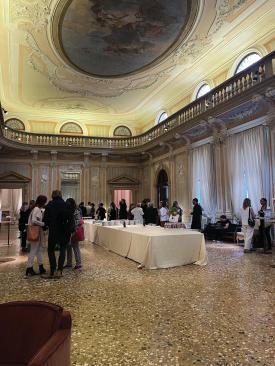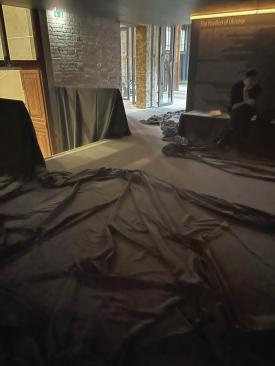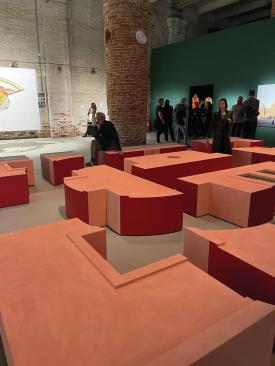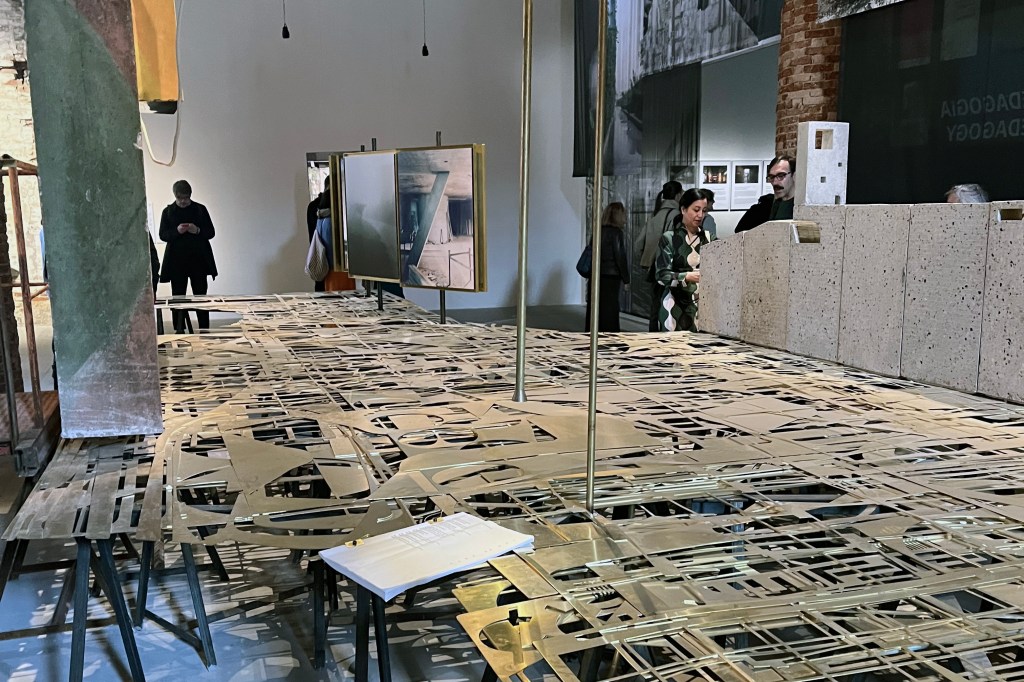
Ian Volner
At the elegant Hotel Monaco on Venice’s Grand Canale, a group of architecture lovers in town for the Venice Biennale, gathered to celebrate the publication of Towards Abundance: The Delightful Paradoxes of Gender (The Architectural Review, 2023), a new monograph with essays from design writer Adam Nathaniel Furman and others. “If we were in Florida, we’d be arrested for this,” said the book’s editor, San Francisco–based architect John Jennifer Marx, AIA, pointing to the book’s provocative cover—a pseudo-classical image of the Three Graces, only with two of them sporting altered genitalia and the third rendered with a non-white complexion. Unlikely as the prospect was, one couldn’t help but imagine Gov. Ron DeSantis crashing through the window of the ornate Monaco ballroom, jumping atop the buffet table and announcing a raid.
On the second day of the Biennale contemporary politics loomed large over the event, thanks to curator Lesley Lokko’s tough-minded main exhibition in the Arsenale. From practically the first installation—Those with Walls for Windows, a spoken-word video piece by the London-based poet Rhael “LionHeart” Cape exhorting visitors to rethink the built environment and its history—the show laid down the gauntlet for the architectural profession, exposing troubling global issues along with a few (though fewer than normal) proposals for addressing them. From Britain’s Alison Killing came a startling multimedia presentation on the Chinese government’s systematic destruction of the nation’s Muslim population, laying bear the mechanisms of oppression using film and drawings. In a similar vein, international research team and 2023 Golden Lion winner DAAR presented an examination of recent attempts by right-wing Sicilian authorities to rehabilitate a Fascist-era housing development, literally breaking down the controversy by having viewers watch a documentary film while seated on recreated fragments of the buildings. Lokko’s commitment to reducing the show’s environmental impact meant that exhibitors had to be resourceful. “The theme of decarbonization and reuse is so important,” said Alessandra Rapazzo of Venice’s own AMAA Collaborative Architecture Office for Research and Development, whose mock-up for their adaptive-reuse community project in a former military installation features concrete components salvaged from the actual building site.

Ian Volner
Inside the Ukrainian Pavilion
One of a handful of national delegations housed within the Arsenale complex, the Ukrainian Pavilion felt right at home in the high-stakes, high-tension environment, presenting a nearly empty interior which (along with a landscape piece in the nearby Giardini della Biennale) will be filled with a sequence of different elements as the year goes on, possibly responding to actual events on the nation’s battlefields. As co-curator Borys Filonenko, put it, “We think of this as just a starting place for a conversation that can take place outside the Biennale.”

Ian Volner
An installation from 2023 Golden Lion winner DAAR
